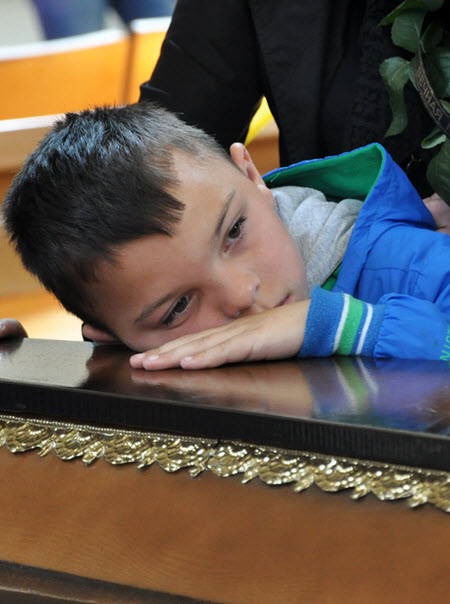 Immediate Family
Immediate Family
Julie’s** daughter Maggie* was regressing in school, sticking to her mother like Velcro, whereas her son Jack* started acting out and getting into fights at school.
In our initial call, Julie expressed enormous guilt.
“I felt like I was in a fog, and I wasn’t there for them.”
I assured Julie that her guilt was normal and that children are very resilient. She decided to work with me. After some one-on-one sessions, I suggested that we get together with her kids in a familiar environment and plan a grief retreat with something for everyone.
Julie and the kids loved this idea. We brainstormed together, and everyone came up with their requests and contributions for a special day of love and remembrance. Julie wanted to write a private letter to her husband and dissolve it in the sea, which everyone decided they wanted to do, too.
We ended with a bonfire, symbolically throwing into the fire the feelings and behaviors that we identified that weekend were no longer serving this family. We gathered strength for the journey forward, using their hopes and dreams as a north star for this family’s new normal.
Extended Family
Some deaths are sudden, and only the immediate family is present. Others occur in the home, assisted living facilities, or hospitals over an extended period.
Kaitlyn*, a 16-year-old with terminal heart failure, was in the hospital. Her parents were informed that the end was near and notified the extended family. Aunts, uncles, cousins, and grandparents filled the waiting room, full of love, worries, and questions. They were all grieving and looking for ways to support the immediate family with this heartwrenching, impending loss.
At the grandparents’ request, I provided some education on grief, suggestions for assistance with practical matters, and helped this family circle come up with “what to say and what not to say” to Kaitlyn, the parents, and siblings.
 Teenagers
Teenagers
Teenagers with a terminal diagnosis may benefit from a sounding board and facilitator for family conversations around autonomy, fear, hope, and meaning.
Using a planning guide for end-of-life wishes, such as Voicing My Choices, gives adolescents a voice and agency in their own care. It can also help guide thought and discussions that, in their worst nightmares, no one dares to have.
Making the safe space to find words for the unspeakable is often the path to deeper connection, understanding, and peace, to everyone’s surprise.
Community
Collaboration of a community is a truly beautiful thing to behold.
Brett* was an active, bright, funny, and athletic eight-year-old with Leukemia. Before he got sick, he was the first one to raise his hand for any sport and a confident leader his peers looked up to.
After starting chemo, Brett lost all his hair, missed weeks of school, and had to return to the classroom with a port for treatment. His confidence waned, and he expressed his nervousness about returning to school to his mom. He wondered if other kids would make fun of his bald head or the tubes coming out of him. He worried his friends wouldn’t want to play with him anymore, and his older sister was concerned people at school would be “weird” to him.
At his mother’s request, and working together with the school counselors and other staff, we developed a program to help his classmates find words to voice their worries and well wishes for the family. This made a huge impact on Brett and his whole community.
A key aspect of the program was a class art project. This “Welcome Back” event was just the thing to engage even the youngest little ones in processing thoughts and feelings around serious illness. It also showed a family in crisis that they are held and supported by their community.
Help is available now. Call or click here to schedule your free initial 15-minute consultation.
*Names changed to protect client confidentiality.
**Visit Adult Individual Grief Support for Julie’s story.

